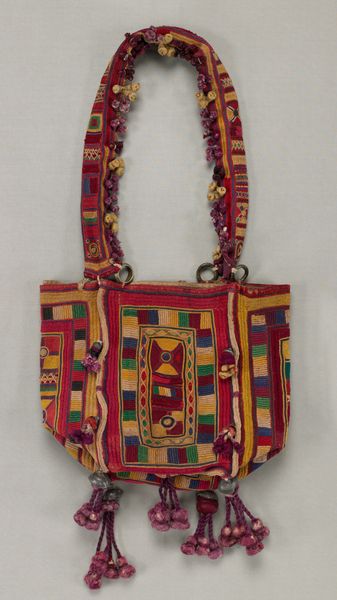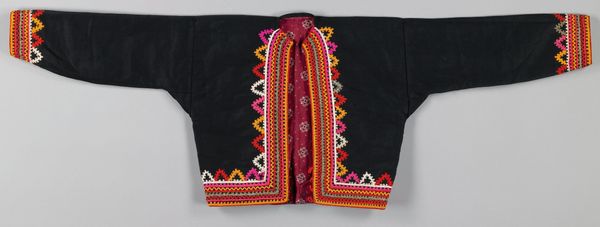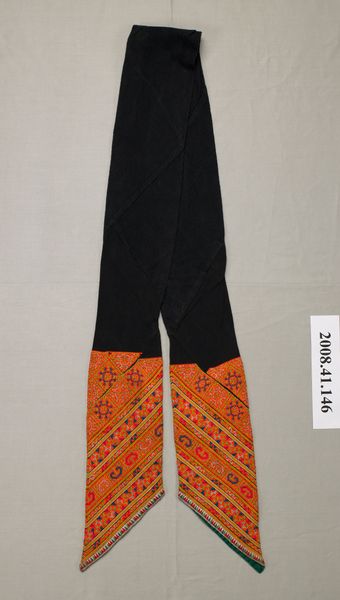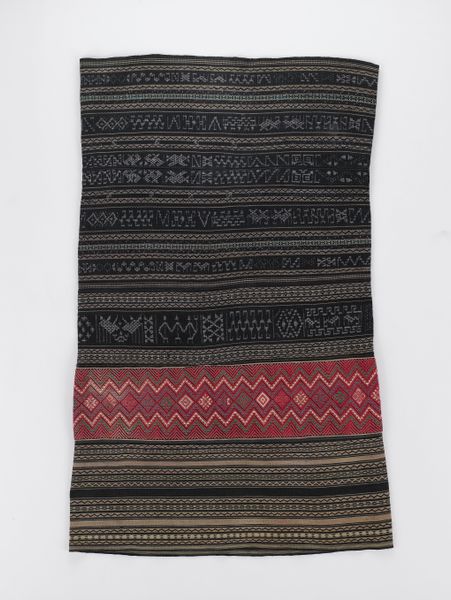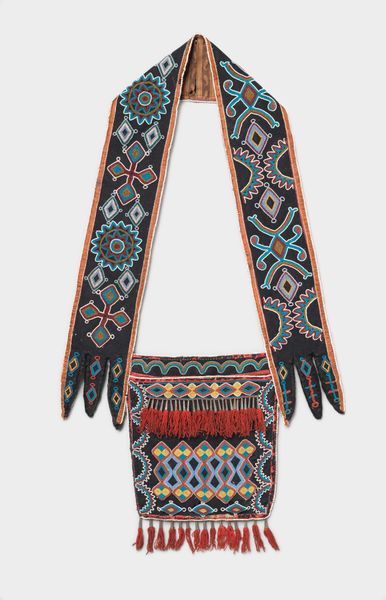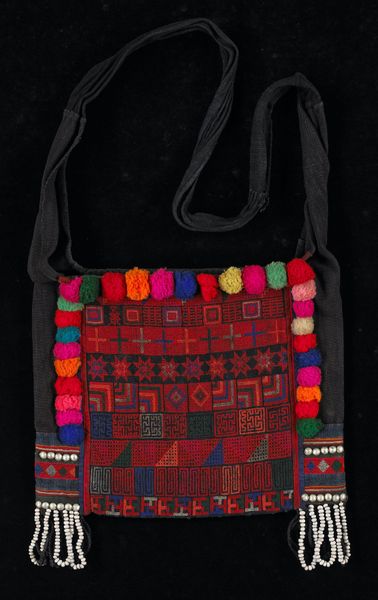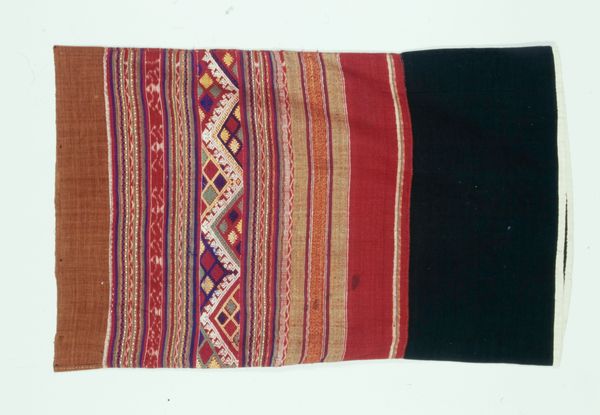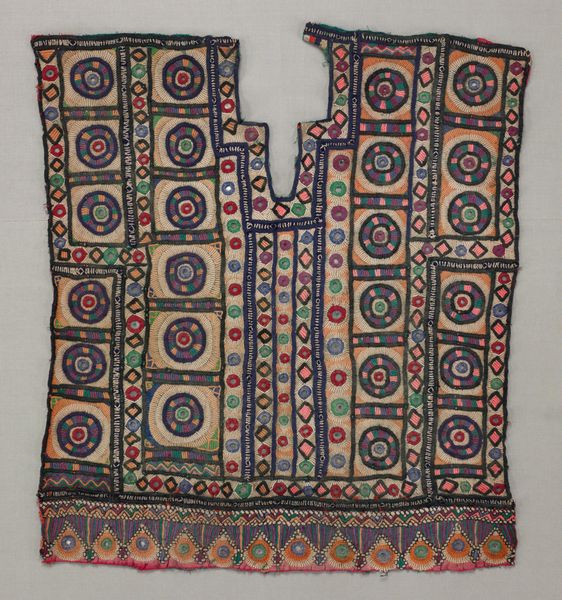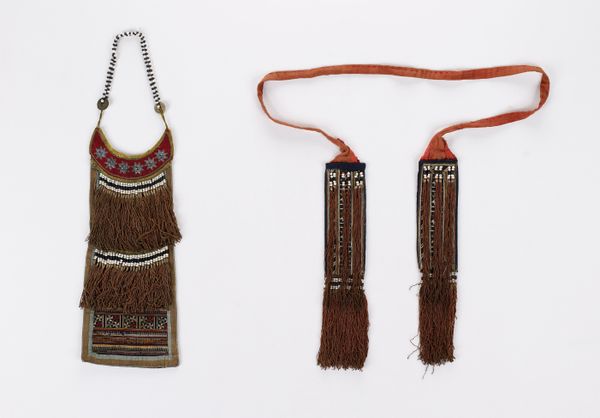
fibre-art, weaving, textile
#
fibre-art
#
weaving
#
textile
#
geometric
Dimensions: 10 3/16 x 12 5/8 in. (25.88 x 32.07 cm) (bag only, without tassels)38 x 3 in. (96.52 x 7.62 cm) (object part, strap)
Copyright: Public Domain
Editor: So this is a textile "Bag," made around the 20th century by the White Lahu people. It’s currently at the Minneapolis Institute of Art. The vivid colours and geometric designs are so striking! How would you interpret this piece, considering its cultural background and historical context? Curator: Well, considering its social function, this bag isn't just an object; it’s a cultural statement. Woven bags like these are critical parts of indigenous expression. Who is creating this bag? How are they trained, and who are they creating it for? Do the colours have a specific meaning to the people creating them? Editor: That's fascinating! I didn't realize how much these types of considerations shape how we understand and display indigenous art. Curator: Museums play a pivotal role. They are spaces where cultural objects gain legitimacy but also spaces where, historically, these objects have been divorced from their original context, viewed as curiosities rather than integral expressions of community identity. How does exhibiting it affect our understanding? Editor: It makes me think about how the museum’s framing changes its inherent value, transforming a functional, personal item into an art object. Curator: Precisely! And beyond aesthetics, we have to think about its practical uses, the socioeconomic implications of textile production within the White Lahu community, and how it fits into the broader narrative of Indigenous representation. This bag might hold stories of trade, tradition, and identity. What purpose does the bag serve for the White Lahu? How does it influence the trade in that particular area? Editor: That opens up a whole new level of appreciation. Thanks, I am thinking about art and history in a much richer way now! Curator: It's essential to always consider the multifaceted role art plays within society and its power in reflecting cultural dynamics. It's not just about the visual, but the visceral—the life within it.
Comments
No comments
Be the first to comment and join the conversation on the ultimate creative platform.
